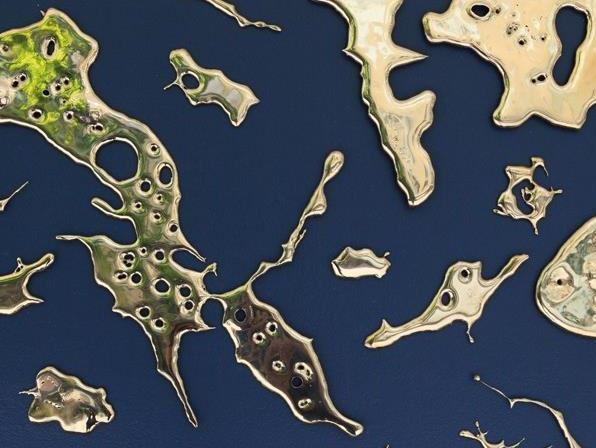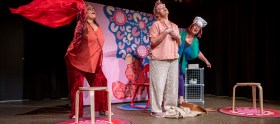Lindy Lee, Continents Drifting (detail), Image via the Australia Council Visual Arts Fellowship Exhibition
Contrary to Humphrey Bower’s article AusCo ‘flexibility’ isn’t necessarily a good thing (Wednesday, 28 January), the Australia Council has not removed artform specific assessment panels under our new grants model.
The Artform Board structure has been replaced by rotating art form panels, Chairs and Directors of individual art forms and a larger and more diverse pool of peers to ensure there is a deeper and richer level of knowledge and expertise. Artists and arts organisations will continue to be assessed by a panel of peers from their relevant discipline, and individual artists are not competing in the same categories as arts organisations.
Peer assessment is fundamental to the grant decision-making process. To increase the number of practice experts involved in the assessment process the Australia Council established a rotating pool of peers drawing from across the sector.
The new peer pool contains more than 600 artists and arts practitioners from all states and territories, including regional areas, who can serve on an assessment panel up to six times over three years.
Under the new grants model, which opened in January, applicants are able to choose which artform panel assesses their application, including the option of a multi-art form panel.
Successful grant applications are published on the Australia Council website, as well as the names and state of the peers on the assessment panel.
We have made these changes in response to recommendations from the Australia Council Review and extensive input from the sector, which consistently focused on the need for a simpler, more flexible grants system with a greater variety and turnover of assessing peers.
The Australia Council Review identified that while our grant programs had served the arts well in the past, it needed to evolve with the sector and be more responsive to the new ways art is being made and presented.
The review process began in 2012 and was not prompted by the Council’s grants budget.
In response to feedback, we have created a model which focuses on giving artists and organisations the freedom to pitch the work they want to make or present, instead of trying to fit into more than 140 narrow categories.
There are now five grant categories with a standard set of closing dates, and the opportunity to apply for support for all facets of a project in one application.
For the first time individuals and groups can apply for development and project funding four times a year.
Multi-year project funding will be offered to arts organisations four times a year, and they can also apply for six-year funding.
The only category remaining the same is the fellowships, which will be offered once a year to recognise and support the impressive careers of our most esteemed artists.
The feedback we have received about the changes has been largely positive, but we will monitor the process and welcome input from the sector.
As with any major change there are likely to be refinements and a new system of evaluation will ensure we have close oversight of any issues or trends emerging.
Our first round closes on 3 March and further details on the new grant categories and how to apply can be found here: http://www.australiacouncil.gov.au/funding/new-grants-model/






